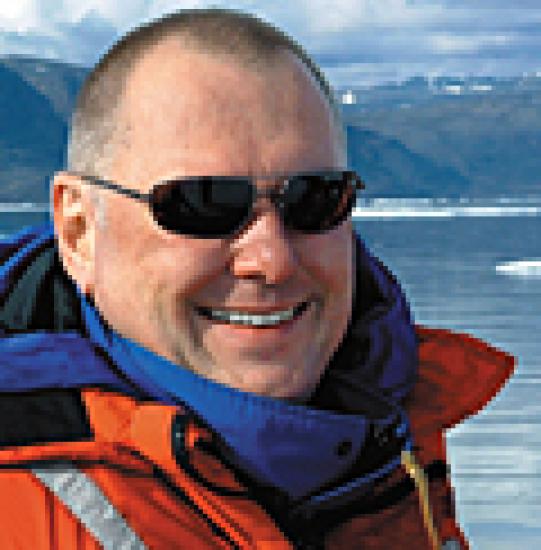Last fall, when the Canadian Navy proposed allowing its ships to dump garbage in the Arctic waters bordering the Nunavut territory in northern Canada, the native Inuit who live there were quick to protest. They were concerned that the pollution would hurt the hunting and fishing that are critical to their economy.
“The Inuit are very risk-averse,” says Andrew Campbell, CEO of the C$1.2 billion ($1.18 billion) Nunavut Trust, which was established by the Canadian government in 1993 as part of the Nunavut Land Claims Agreement to support cultural, economic and social programs for the Inuit. The agreement carved out of the Northwest Territories what is now Canada’s largest territory, with the legal title for much of the land belonging to the Inuit.
Campbell joined the trust as CEO as the claims settlement was being finalized. “All they had when I came was the trust deed sitting in the drawer and a vision,” says Campbell, 60, who had spent the previous decade managing the pension fund at Canada Mortgage and Housing Corp. in Ottawa and knew as little about the Inuit as the Inuit knew about investing. “They asked me right away, ‘Do you know anything about the aboriginal people?’ I said, ‘No,’ and they said, ‘You’ll learn.’”
When it came time to introduce alternatives into the trust, Campbell wasn’t surprised to face some resistance from the six Inuit leaders who serve as trustees. But he has found that by drawing on the Inuit people’s strong ties to their land, he has been able to impress upon them the importance of both protecting and growing the trust’s assets.
“We tell them, ‘You once had the land, and you know that land is to be protected because it’s not yours, it belongs to past, present and future generations,’” says Campbell. “‘Now you’re receiving money for the land, so shouldn’t you treat the money the same way?’”
This approach has resonated with the trustees, who are ultimately responsible for all investment decisions. They are supported by an advisory committee comprising five experienced portfolio managers, including Campbell. Although the trustees are wary of lightly regulated investment vehicles like hedge funds, he says they have recently recognized that to best serve the interest of the trust and its beneficiaries, these investments may deserve a closer look.
At the end of 2002, the trust did dip its toe into hedge fund waters, investing 2 percent of its assets in two separate funds of hedge funds in an effort to learn more about them. Three years later, when the time came to either make a more substantial investment or terminate the allocation, the trustees opted out, citing a discomfort with the funds’ lack of transparency and liquidity.
But in May 2007 the Nunavut Trust hit a milestone that brought the topic of diversification back to center stage: It received its last scheduled cash payment from the Canadian government. Campbell and the advisory committee believe that to preserve the trust’s capital, it is important now more than ever to maintain steady returns and avoid losses that volatile equity markets can cause. For that they’re turning to portable alpha.
Portable alpha is a strategy that shifts the alpha generated by an active manager, often a hedge fund, to the returns of an index like the Standard & Poor’s 500, which is recreated using futures contracts or swap agreements. Campbell says he plans to invest the assets devoted to portable alpha — initially, about C$150 million — into a fund of hedge funds, then port the return onto half of the fixed-income allocation, which currently makes up 30 percent of the total portfolio (equities account for the other 70 percent). With the help of Chicago-based Aon Consulting, the board has narrowed down the list of prospective fund-of-funds firms to a handful of finalists. Hires could occur as early as this month.
Campbell figures that for the trust to preserve its assets in perpetuity — as was the intent when it was created by the Canadian government 15 years ago — it needs a consistent annual return of 9 percent. That would allow it to pay out 4 percent of its yearly earnings to its main beneficiary organization, Nunavut Tunngavik. So far, the trust has consistently exceeded this goal: Annualized returns for the five years ended September 30, 2007, were 10.57 percent.
Campbell believes the trust is well positioned to keep up that rate of return over the long haul. “When we have good markets, we’ll build up a reserve,” he says, adding that when bear markets take their turn, he expects portable alpha to lessen the blow.






